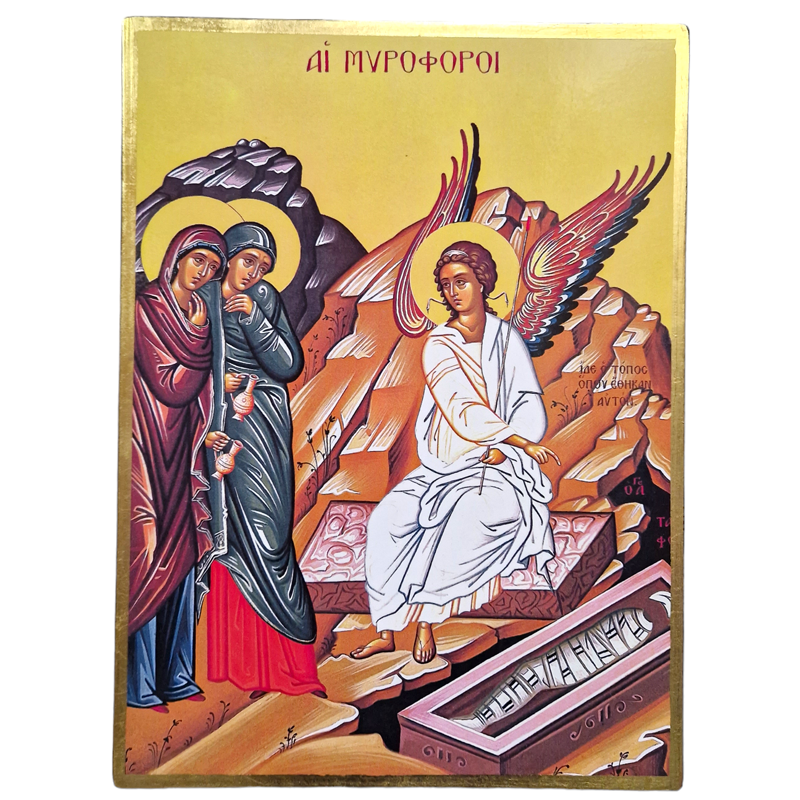The honey bearers
€25,00
Lithograph of the Myrophores image.
Lithograph image with honey bees.
Myrrh bearers are the women who followed the Lord together with his Mother, stayed with her during the hour of the salvific passion and took care to anoint the Lord’s body with myrrh.
In other words, when Joseph and Nicodemus asked for and received from Pilate the body of the Lord, they took it down from the cross, wrapped it in shrouds with fine spices, placed it in a carved monument and placed a large stone over the door of the monument.At that time, according to the evangelist Mark, Mary Magdalene and the other Mary who was sitting opposite the tomb were present. Alli Maria definitely meant the Mother of God. Not only they were present, but also many other women as Luke mentions.
Saint Damascene the Studite mentions in detail who the Myrobearers were:The first Myrofora is Mary Magdalene from whom Christ had cast out seven demons. And for this favor he followed him. After the ascension of Christ he went to Rome to the emperor Tiberius and healed his eye. He also denounced Pilate and the high priests to Tiberius for the unjust crucifixion of Christ and he put them to death. Mary Magdalene died in Ephesus where she was buried by John the Theologian. Later the emperor Leo the Wise took her remains to Constantinople.
Second was Salome daughter of Joseph of Mnestoros who later married the little Zebedee.The third myrobearer was Joanna, the wife of Huza who was a steward and housekeeper in the house of King Herod.
Fourth, Mary, the sister of Lazarus, who had previously anointed Christ with myrrh, as John the Evangelist writes.
Thursday was her sister Martha who served Christ very willingly from the beginning.
Sixth is Maria the wife of Clopas. The evangelist John calls this Mary “sister of the Mother of God”. Joachim, the father of the Virgin Mary had a brother and when he died childless, he took his wife as his wife according to the Mosaic law. With her he had a child, Maria.
Seventh Myrophoro was Sossanna.There were other Myrobearers who helped the above, as the Evangelist Luke says, but their names are not mentioned by the Evangelists because they did not consider them important. Our Church celebrates their memory on Palm Sunday on May 8.
